20 Comforting Dishes From Around The Globe To Eat When You're Sick

"Food is medicine" is a phrase used with some frequency in a variety of cultures. The idea behind this saying can be true on a number of levels.
Food can help to support immune systems when weak or sick. It can also connect us to cultural ties, alleviating loneliness and easing grief or feelings of loss. Food serves as emotional support, punctuating joyful occasions with the taste of buttercream from a cake or helping to evoke and revisit joyful childhood memories of a person, place, or occasion. All of these means are their own forms of equally valid medicine, working to feed our physical and emotional health.
Certain types of dishes, often served in bowls for wrapping hands around, can evoke these feelings of comfort more readily. For those in need of healing inspiration, here are 20 dishes from around the globe, often cooked with the express desire to bring a bit of joy, comfort, and ease to whoever eats them.
Read more: 21 Delicious Ways To Use Up Leftover Rice
Matzoh Ball Soup - Ashkenazi
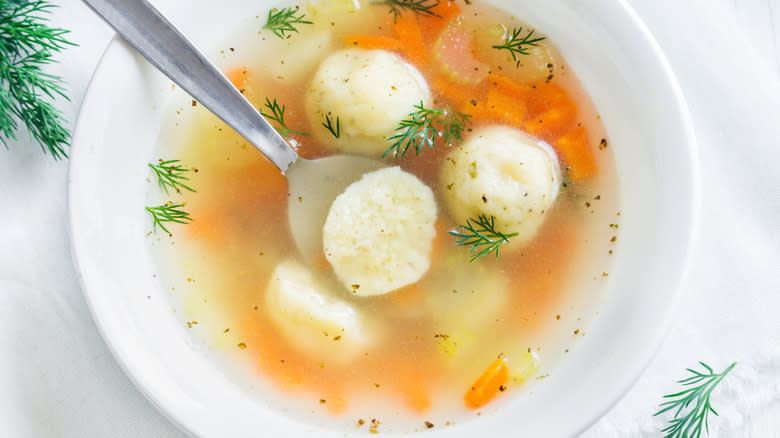
It's relatively well-known that chicken soup also goes by the alias "Jewish penicillin." It's become canon, with everyone from your bubbe to Jamie Oliver calling it by its culturally linked nickname.
Chicken broth, when made from the animal rather than a stock cube, has some medicinal benefits, including reducing nasal inflammation (i.e., a head cold), according to lab results from the University of Nebraska Medical Center, in the early 2000s. However, one cannot live on broth alone.
Add a few fluffy or dense matzoh ball soup dumplings to your chicken broth elixir for maximum soul-soothing satisfaction. Though eaten during Jewish holidays like Rosh Hashanah and Passover, you don't need the excuse of a holiday to make or eat matzoh balls.
Pastina - Italy

Italians and the Italian diaspora will be incredibly familiar with the tiny, star-shaped pasta known as pastina. Pastina, meaning "tiny pasta," has come to be associated with a particular shape, namely the star. However, pastina can be any type of small pasta.
Pastina is often served to tiny pasta eaters in a variety of ways. Their diminutive, orzo-like consistency is perfect for soaking in hot chicken broth and serving to anyone, big or small, who might be feeling a bit under the weather.
This adorable little pasta has also warmed the hearts of Italian Americans with a slightly different dish. Now TikTok-famous, the pasta is cooked in broth until the liquid has been absorbed, then served with a generous amount of butter and cheese and an optional egg until it's somewhere between a carbonara and a risotto. The delicious results elicit feelings of comfort amongst anyone lucky enough to sit down to a bowlful.
Tom Yum - Thailand
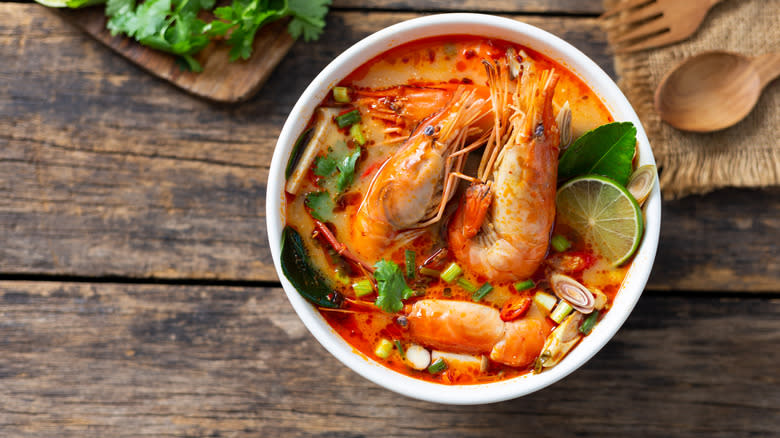
Thailand's national dish, tom yum, perfectly balances comfort, flavor, and nourishment. Flavor-and-vitamin-rich ingredients like lemongrass, garlic, galangal, lime, and chile are tempered with soothing coconut milk and collagen-packed chicken stock to create the perfect cold-fighting elixir we'd happily slurp up no matter how we're feeling.
The popular spicy soup is Thailand's recently proposed candidate for UNESCO's protected intangible cultural heritage list for multiple reasons. The ingredients highlight some of the country's most treasured natural resources and are also used for medicinal purposes.
Add a heavy-handed helping of vegetables and lean protein (either tofu or shrimp tom yum are typical) to the intoxicating broth, and what you have is a health-boosting, tongue-tingling, soul-soothing dish that will help see you through any case of the sniffles.
Laksa - Malaysia, Indonesia, Thailand, And Singapore
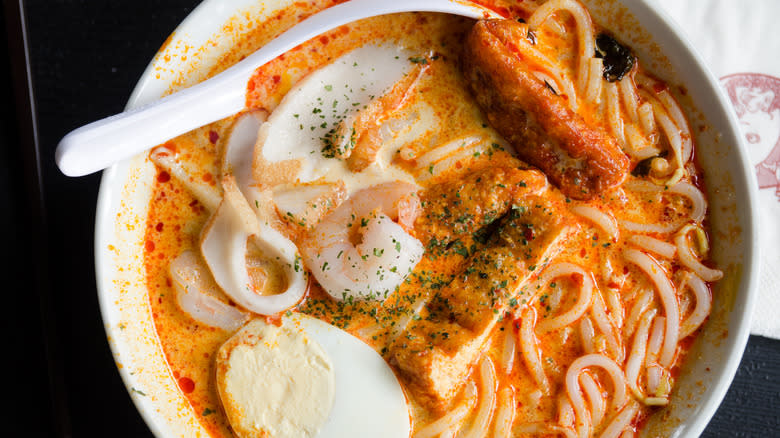
There is something unbelievably soothing and equally invigorating about a steaming bowl of laksa, from the creamy coconut milk-infused broth to the sour pucker and treacly texture of the tamarind. Laksa, a spicy Southeast Asian noodle soup, has captured the hearts and tastebuds of Malaysians, Indonesians, Thai, and Singaporeans, where it is eaten most frequently. And, there may be as many different kinds of laksa as there are diners enjoying a bowlful of the stuff.
Laksa's origins are cross-cultural, tracing the movement of people along the Southeast Asian spice trade as well as the international relationships, both in food and in families, that took place as a result. It is a dish that unintentionally showcases food and people's ability to adapt and grow while using all available resources. This brothy soup's sour, bitter, spicy ingredients provide rich sources of vitamins and flavor that can cut through even the toughest, tastebud-dulling head cold.
Congee - China
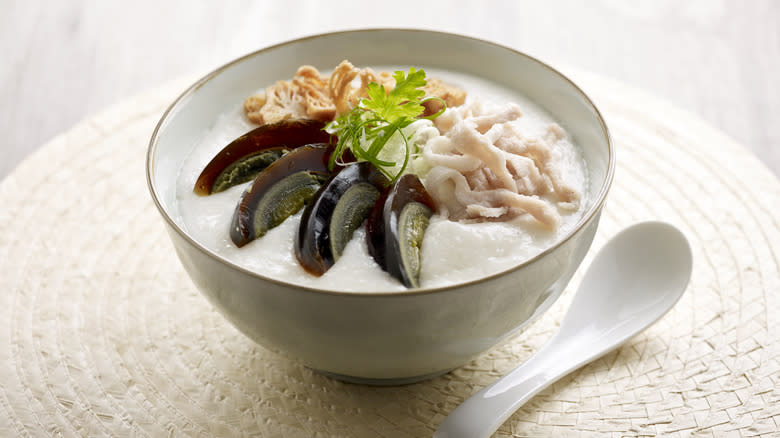
Like many other dishes on this list, congee is a dish whose comfort far exceeds the sum of its parts. Its parts can be as long as a grocery list or as few as its two base ingredients: rice and water. Though most commonly made from rice, can also be created from wheat, barley, sorghum, millet, or tapioca. Congee dates back to the Zhou dynasty in China, with variations eaten across Asia and the diaspora. Its simplicity can be used to stretch supplies during times of hardship or to gently fill tummies on the mend after illness.
Congee is widely known as a savory breakfast dish, and toppings can range far and wide from eggs to pickled ferments, chicken to chile crisp. Customizable add-ons serve as the punch of flavor welcomed and absorbed by the soothingly stodgy porridge.
Arroz Caldo - Philippines
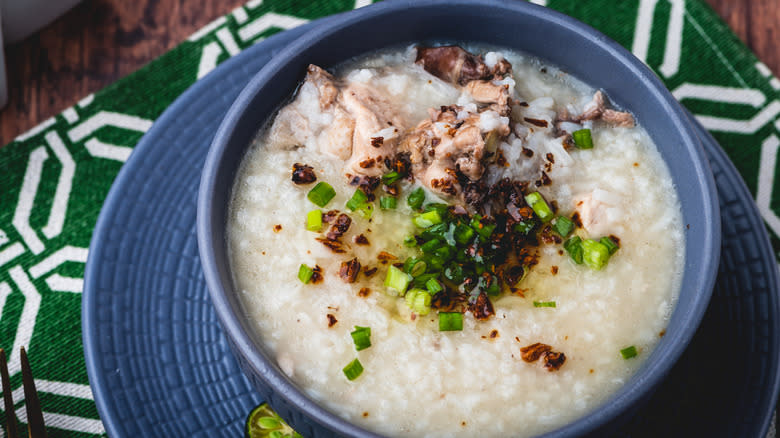
Arroz caldo is, more or less, the Filipino variation of congee. Whether it's a tummy bug, a broken heart, or a touch of homesickness, arroz caldo is a soft and warming landing, no matter the occasion.
Made from a mixture of glutinous and jasmine rice (or another medium-grained version), arroz caldo is cooked using the same principles as congee. The rice is soaked, then slow-cooked in stock and fish sauce until it has broken down into a porridge-like consistency. Served with copious amounts of shredded chicken, fish sauce, garlic, and ginger, the entire bowl tastes like a warm hug. It's no wonder this is also a traditional Iftar meal eaten during Ramadan to break the daily fast.
Caldo De Pollo - Mexico
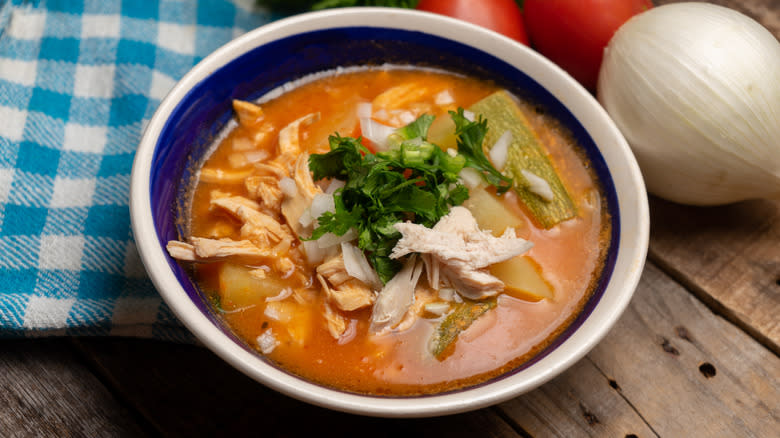
Traditional Indigenous medicine and healing in Mexico, or curanderismo, is still widely practiced within the country and the diaspora. These healing rituals can have as much to do with the power of intention and energy as they do with nutrition, which is also true with many comforting, culturally-based foods.
There is something universal about the healing powers of chicken soups that seems to call grandmothers, bubbes, nonnas, and abuelas around the globe into the kitchen at the first sign of a sniffle. These soups are not only made from nutritious ingredients, they're infused with feelings of unconditional, reassuring, and supportive love, which is probably why they are so good at soothing whatever ails you.
Mexican Caldo de pollo is made by slowly cooking chicken, potatoes, and vegetables flavored with chiles, tomatoes, and spices like cumin, cilantro, and bay. The results are a vibrant and brothy soup, perfect for chasing away a cold or a chill.
Soba Or Chorba - Morocco
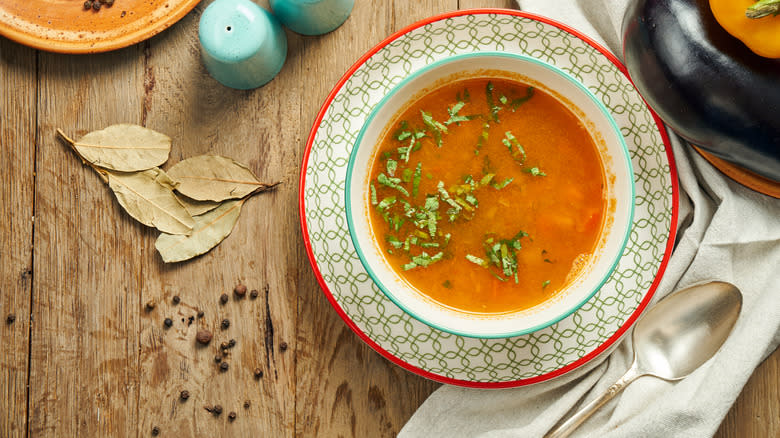
Soba, or Moroccan vegetable soup, is a comforting and restorative dish. It's often made during the year's colder months to break fast during Ramadan or help nurse someone back to good health. It's also a fantastic way to reduce kitchen waste; when it comes to vegetables in this soup, more is more!
Hearty vegetables like potatoes, turnips, pumpkin, broccoli, and carrots are cooked until very soft. Then, depending on personal preferences, the soup can be ground or blended until smooth or kept chunky like a minestrone. The dish can be made vegetarian or with lamb or chicken, with chickpeas often added to the pot.
There are many names for the soup, depending on the community where it is made — chorba, in Turkish, is the title given to soups that aren't thickened, making them light and easy to digest. The soup is similar to harira, another flavorful Moroccan soup eaten to break fast during Ramadan and known to be warm and comfortable from the inside out.
Jook - South Korea
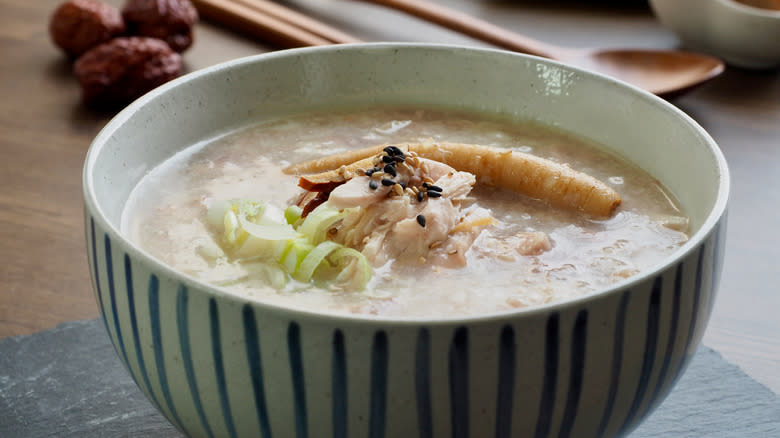
Rice-based porridges like jook are a familiar cure-all in many forms and with many names across Asia, with several other versions already on this list. Gentle on the stomach, filling with a comforting, creamy texture — it's easy to see why it's so popular as a means of soothing.
Like congee, toppings are a welcome and encouraged addition and a great way to add extra flavor and vitamins. Banchan, or side dishes, are Korean cooking essentials, including many pickled and fermented vegetables rich in fortifying nutrients. Hobakjuk, or pumpkin porridge, is also a common variation when pumpkins are in season.
Food as medicine is a principle woven into the cuisine of South Korea. Its practice, including the various ingredients and their healing properties, was recorded in Donguibogam, a 25-volume collection that dates back to the Joseon dynasty in the 1600s.
Pho - Vietnam
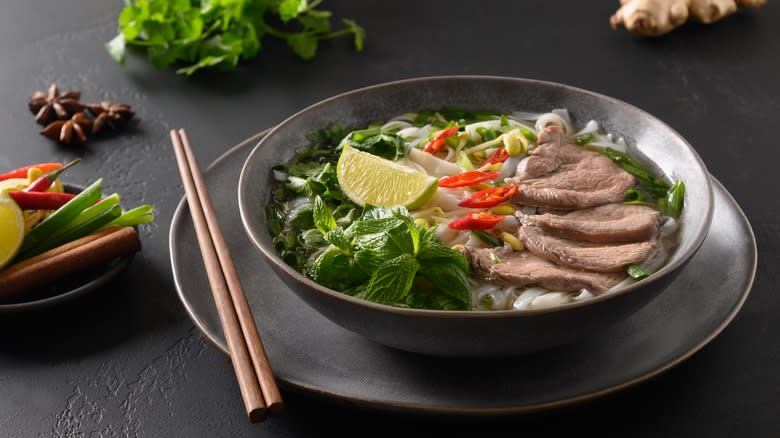
Not that anyone ever needs an excuse to treat themselves to a steaming bowl of pho, but recovering from a cold, sinus infection, or anything similar is a good one. Rich in protein and anti-inflammatories, thanks to beef or chicken broth, pho is traditionally eaten for breakfast across Vietnam. Created initially in northern Vietnam around the early 1900s, pho is often served with a separate plate piled high with herbs, chilies, and vegetables containing polyphenols. When it comes to breakfast dishes, a bowlful of pho packs way more nutrition, not to mention flavor, than a standard bowl of breakfast cornflakes.
There's something deeply comforting about the combination of silky rice noodles soaked in a rich broth, enlivened with crunchy bean sprouts, fresh herbs, and chilies, then doused with lime. What more reason do you need to get the stock pot going and make your own version of this beef noodle soup?
Chicken Noodle Soup - U.S.
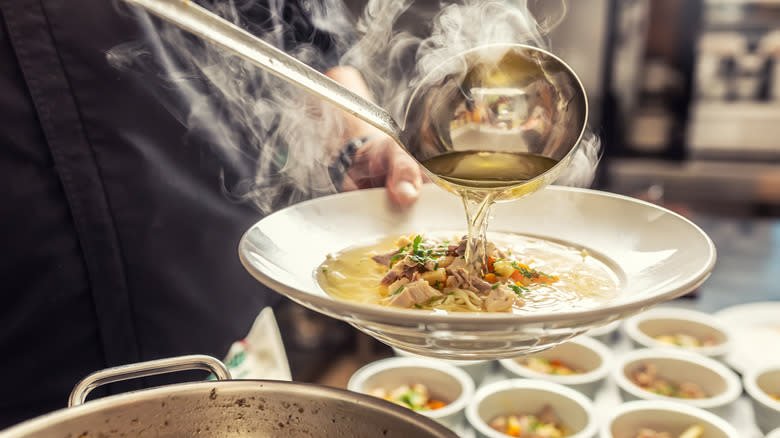
So ubiquitous is a chicken noodle soup cold remedy in the U.S. that brands like Campbell's Soup have been profiting off of its cure-all status for years. Cambell's was, in fact, the very first soup company to commercially package the soulful elixir of chicken soup with noodles into a can. A remedy for rainy days, sadness, or sickness, Americans have been slurping the stuff in record numbers.
There are a number of different ways to make chicken noodle soup, from simply opening the can to recipes that draw inspiration by using ingredients from around the country, like Tex-Mex styles, including jalapeños, for a bit of extra kick.For those too sick or short on time to make their chicken noodle soup entirely from scratch, there are fantastic shortcuts, like store-bought mirepiox mixes and rotisserie chickens, to help see you from start to finish in just minutes.
Khichdi - India And Pakistan
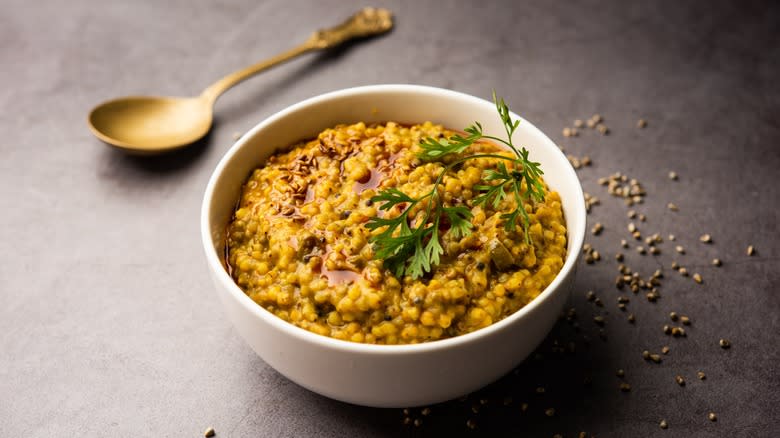
Dating back to 9th and 8th century B.C. India, khichdi has been feeling and soothing South Asian communities for longer than some countries have existed. A vegetarian dish made largely from rice and legumes, a khichdi recipe is as economical as it is nutritious and comforting. The name khichdi originates from the Sanskrit word khiccha, meaning rice and legumes, though there are other variations of the dish.
Nourishing, flavorful, gentle, and high in plant protein thanks to the legumes, versions of this dish are often served as the first food to babies in Hindu culture. It is also a popular choice when helping those who have been ill regain their strength and fight a fever. No matter the reasoning behind making it, khichdi is a flavorful and nourishing dish guaranteed to comfort and fortify.
Ginseng Chicken Soup - South Korea
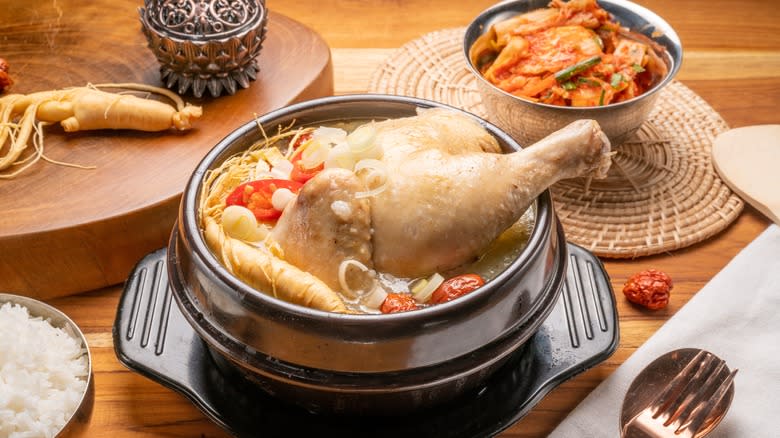
Samgyetang, or chicken with ginseng soup, is a well-known Korean home comfort and remedy. The dish is made to help regulate body temperature, whether because of a cold, fever, or due to the overwhelming heat of summer. Despite the North American affinity for ice-laden drinks when it gets hot out, there's some science that backs up much of the world's practice of drinking hot liquids to help trigger the body to cool itself.
Samgyetang consists of a small chicken stuffed with rice, ginseng, garlic, and jujube or red date. This flavorful, comforting dish does require an appetite as each diner is treated to a Cornish hen to eat all on their own, so not to make unless you've got your appetite back!
Ärtsoppa - Sweden
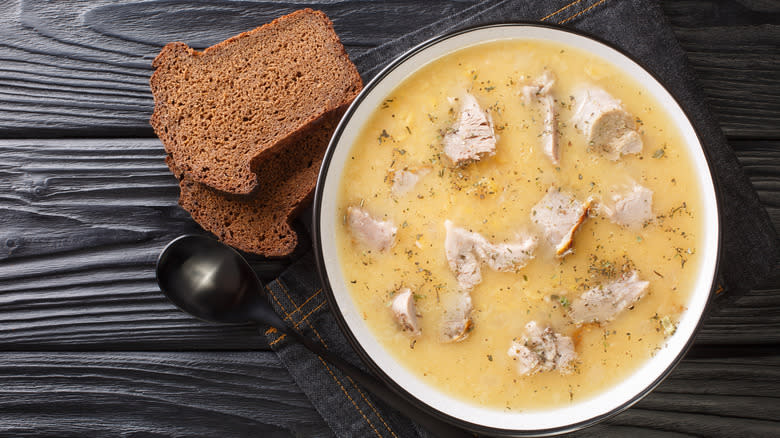
Like most Scandinavian countries, Swedes know a thing or two about keeping cozy during the long, dark months of winter. A bowl of ärtsoppa, a warming and hearty soup made from dried yellow or green peas, is one delicious way to fuel up and feel better.
Made with satisfying and salty ham hock, Ärtsoppa is traditionally eaten on Thursdays — initially to fill up on meat before Friday, when the Catholic Church considered meat consumption a sin. Swedes are known to serve this soup with a garnish of dark Swedish mustard, following up this thick, warming soup with a dessert of thin pancakes and jam. If that's not enough to fortify and restore you, we're not sure what is!
Dried peas are rich in fiber, folate, protein, iron, and magnesium, amongst other vitamins, all used in helping to restore red blood cells, which carry oxygen around the body and support the nervous system and other vital functions.
Lentil Soup - France
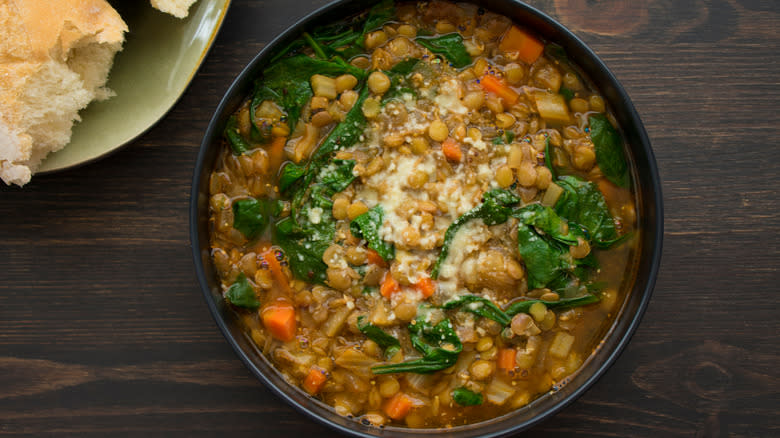
Lentils and their subsequent soup are far from being just a "French thing," their use in cooking can be traced back to around 8,000 B.C., with evidence found around present-day Syria. The French, however, have perfected the use of puy lentils, the petit, green, sturdy variety grown in Southern France, be it braised, sautéed, or stewed.
There are a variety of lentil soups eaten worldwide, thanks to the pulse's incredible health benefits and the ease and rapid rate at which it grows. One French adaptation, using the puy lentils, is to soak the lentils in an earthy soup infused with tarragon, a prevalent herb widely used throughout French cuisine. Served with crusty bread and plenty of French salted butter, you have a bistro-worthy dish guaranteed to bring a robust sense of ease and calm as it nourishes you back to health.
Arroz Con Dulce - Puerto Rico
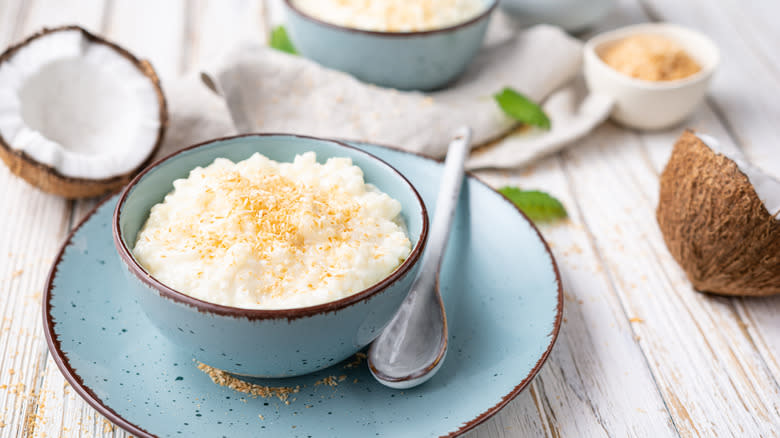
For those who like a bit of sweetness to boost their recovery, arroz con dulce, or "sweet rice," is the comfort dish you've been waiting for. Though there are versions of this dish in various cultures, from biko in the Philippines to kheer in India, this Puerto Rican version uses coconut milk instead of cow's milk. Warming spices like cinnamon, ginger, and cloves make it the perfect Christmas-inspired treat.
Rice is gently cooked in spice-infused water and coconut milk, then further infused with sugar and raisins. While some rice puddings are served warm, and you can do that with this dish, too, arroz con dulce is traditionally chilled before being served. This is the dish for those looking for the filling-but-easy-to-digest properties of rice but want to simultaneously cool and soothe an aching throat or refresh an overheated body.
Cullen Skink - Scotland
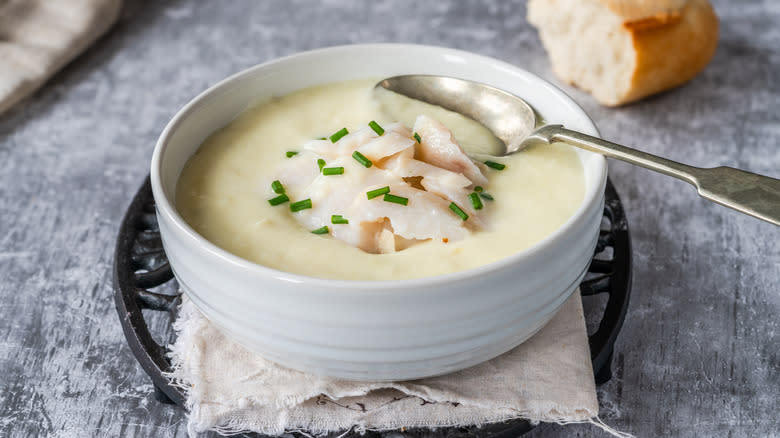
Known for its high-quality smoked fish industry, Cullen skink is Scotland's hearty version of New England clam chowder. Smoky, creamy, and unbelievably satisfying, this is a dish many turn to warm up during the bracingly cold and dark Scottish winters. If this dish can match the force of a Scottish winter, it might just be able to withstand anything life can throw at you.
Cullen skink, named after the village in Moray, Scotland, comprised of three essential ingredients: smoked haddock, potatoes, and cream. Smoked haddock is rich in minerals, including selenium, which helps to protect against cell damage and helps the body fight off infections. It is the perfect hearty dish to warm your bones, comfort your soul, and get you back on your feet after a bout of sickness, sadness, or whatever else ails you.
Turkish Red Lentil Soup - Turkey
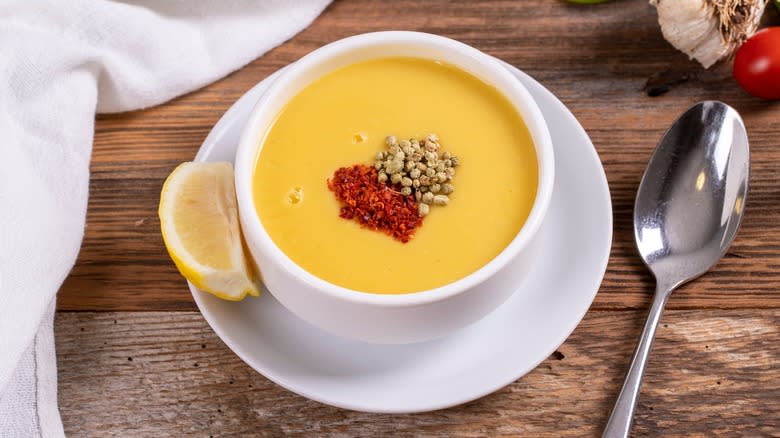
Turkish red lentil soup, also known as mercimek çorbası, is a delicious Turkish winter warmer and a popular dish eaten to break fast during Ramadan. Made with sturdy red lentils, potatoes, and carrots alongside earthy cumin, it's a hearty dish, perfect for fighting colds, feeding a fever, or squashing a case of the winter blues.
By straining or blending the lentils and vegetables after stewing, then reducing the broth until thick, diners can enjoy a thick, velvety broth that's easy on the palate and tummy while still holding all of the flavor and nutrition provided by the vegetables and legumes. We can't think of a more temperate or more delicious road to recovery than this soup. Finish with more olive oil, lemon juice, and a dusting of black or Aleppo pepper if desired before serving.
Jollof Rice - West Africa
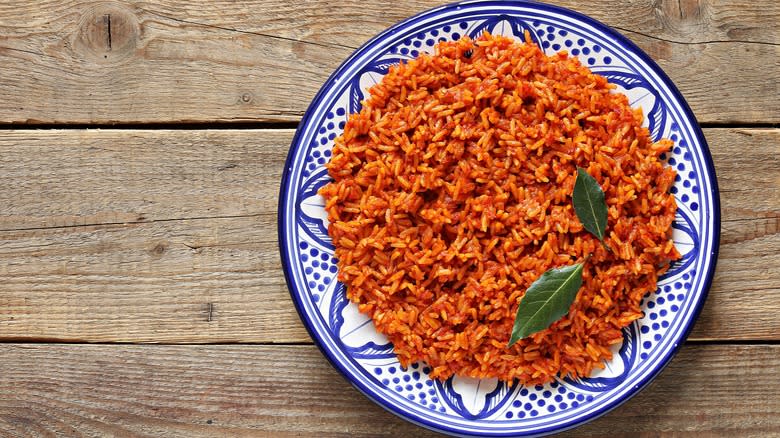
Jollof rice is a comforting dish of tomatoes, spices, and long-grain rice. It is eaten frequently in various forms across West Africa and the diaspora, including Nigeria, Ghana, and Senegal, amongst others. Each country, region, and family will have its unique take and twist on the dish, from what kind of rice is used to the smattering of spices selected. The base of tomatoes, onions, and rice will remain the same throughout each variation.
Made using the heat of a good chile pepper (or several), mixed with onions, tomato puree, rice, bouillon, and spices, this dish will not only comfort but also have the power to cut through congestion. It ticks all the boxes a comfort food should, making it a go-to dish to whip up whenever you feel under the weather or in need of a bit of comfort.
Ramen - Japan
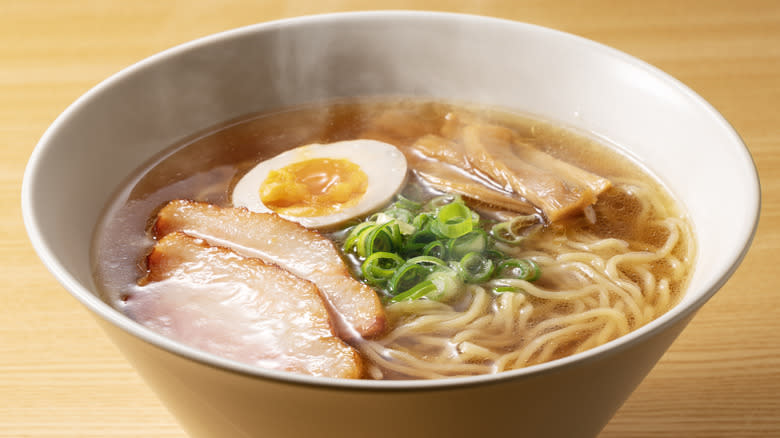
When it comes to which Japanese ramen to make, in our opinion, there's no such thing as a wrong answer. For those in need of heft, variations like curry udon, made with udon noodles bathed in a thick, curry-infused, almost gravy-like broth, is the one for you. Then, there's the classic tonkatsu or kotteri, made with a rib-sticking, opaque pork broth guaranteed to nurse you back to health and then some.
For those looking for something a bit lighter on the digestive system, varieties like assari, shio, and shoyu are ramen dishes with clear broths made from pork or chicken. Fear not, vegetarians, tonyu is a distinctively mushroom-based vegetarian broth, perfect for sipping and slurping.
Various types of ramen allow diners to mix and match to specific palate needs. Try adding in yuzu for a burst of citrus, sriracha, or chili oil for heat, miso for depth of umami flavor, or get creative with your condiments and ingredients of choice.
Read the original article on Tasting Table.

